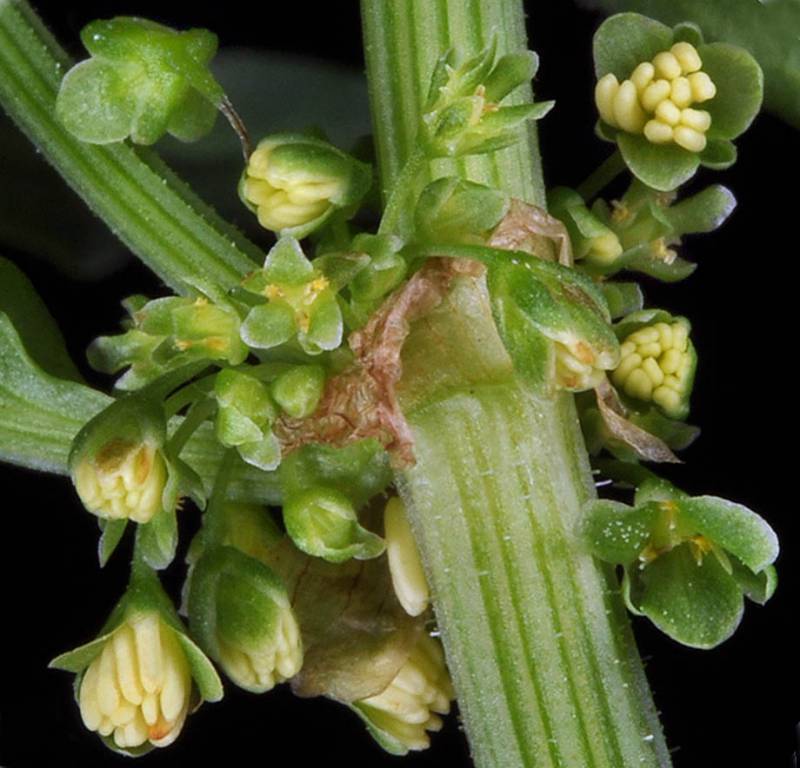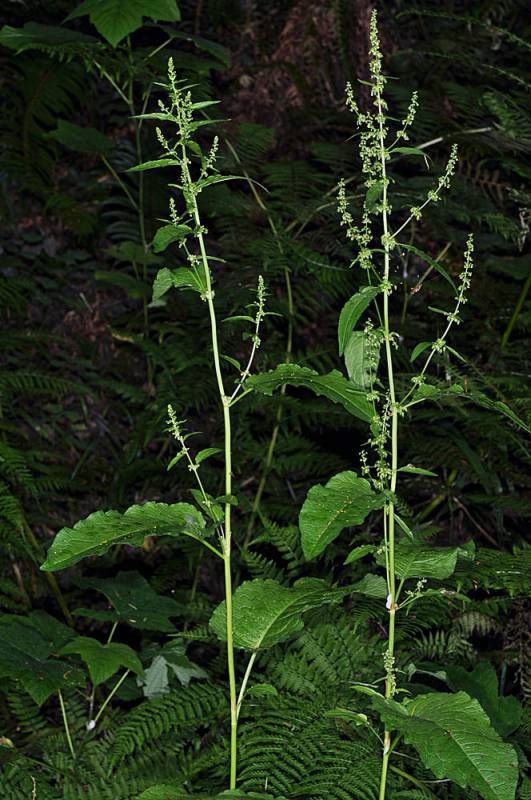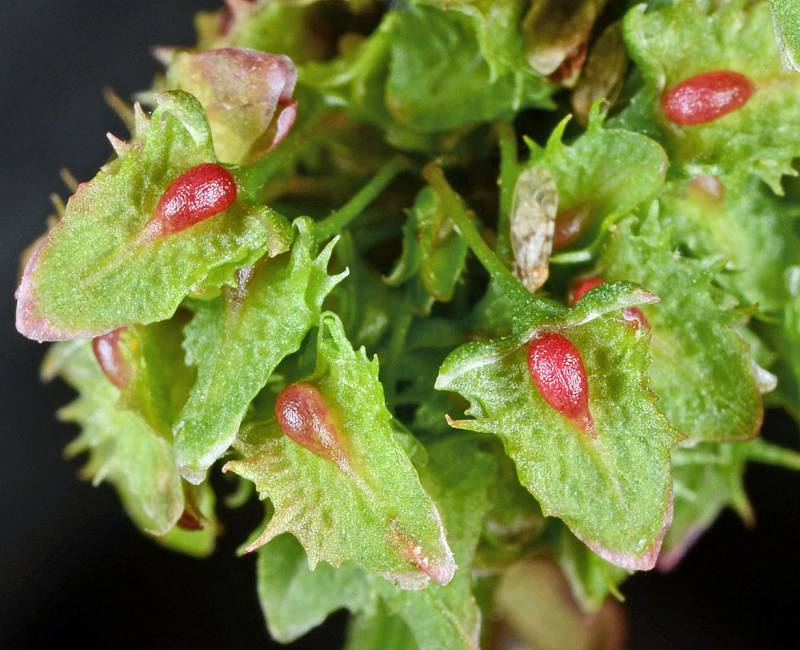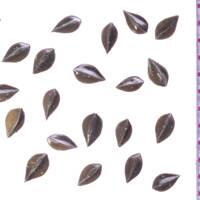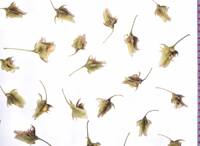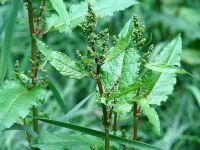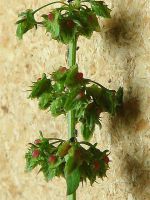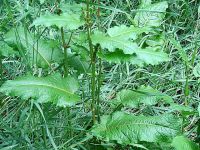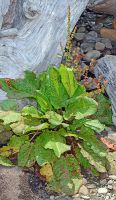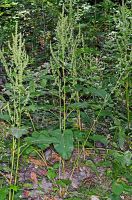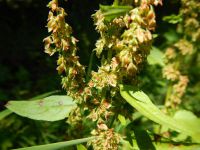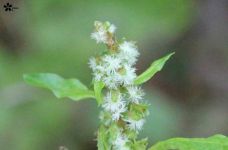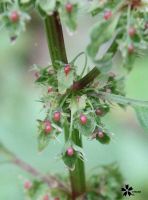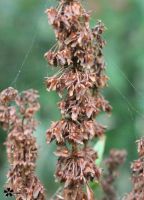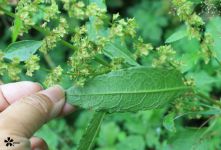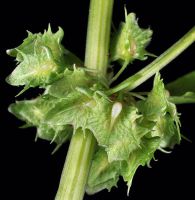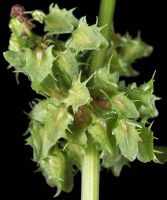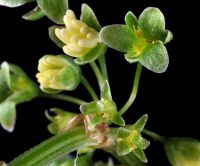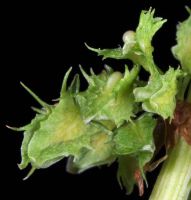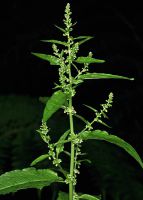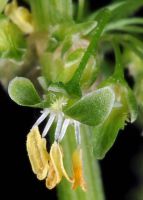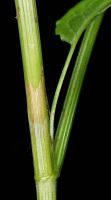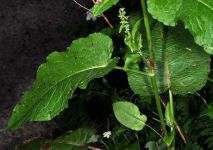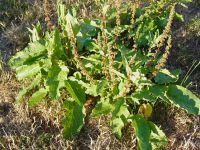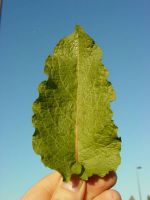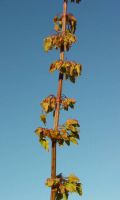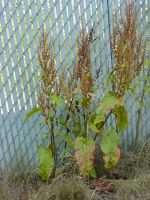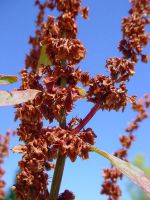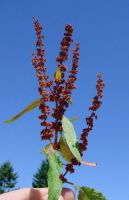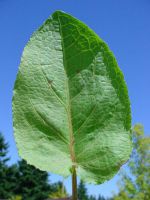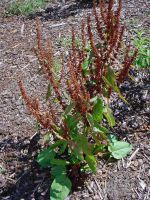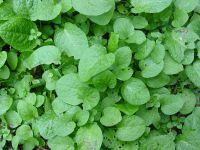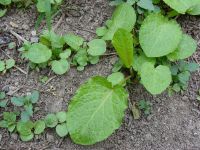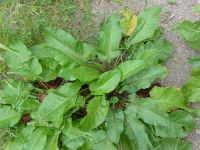Distribution: Occurring on both sides of the Cascades in Washington; Alaska to California, east to the Atlantic Coast.
Habitat: Moist roadsides and wasteland.
Flowers: March-September
Origin: Introduced from Euraisa
Growth Duration: Perennial
Conservation Status: Not of concern
Pollination: Wind
Robust perennial from a large root, without rhizomes, the single stem unbranched below the inflorescence, 6-12 dm. tall.
Basal leaves with sheathing stipules and long petioles, the blade broadly oblong or ovate-oblong, cordate at the base, 10-20 cm. long; cauline leaves several, reduced upward.
Inflorescence a large panicle, the branches ascending, leafy to mid-length; flowers numerous, borne in verticils, the lower whorls several times as far apart as the upper; pedicels slender, recurved, longer than the perianth, jointed below mid-length; flowers perfect, greenish-brown; outer 3 perianth segments 3 mm. long; inner 3 segments ascending, ovate, 5 mm. long, strongly veined, with 2-4 teeth on each margin, usually one segment with a prominent lump on the base; styles 3.
Achene 2 mm. long, smooth.
Publication: Sp. Pl. 1: 335. 1753.
Rumex rugelii Meisn.
PNW Herbaria: Specimen records of Rumex obtusifolius in the Consortium of Pacific Northwest Herbaria database
WA Flora Checklist: Rumex obtusifolius checklist entry
OregonFlora: Rumex obtusifolius information
E-Flora BC: Rumex obtusifolius atlas page
CalPhotos: Rumex obtusifolius photos

